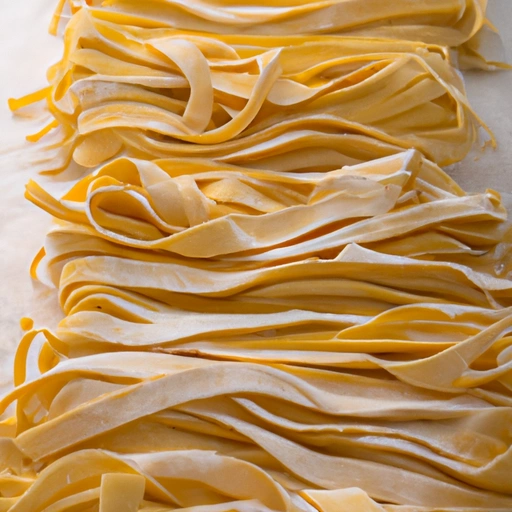Fresh Pasta
Description

Fresh pasta is a staple ingredient in many cuisines, renowned for its tender texture and ability to absorb flavors. Unlike its dried counterpart, fresh pasta is made from a simple dough of eggs and flour, sometimes with the addition of water or olive oil. It is rolled out thinly and cut into various shapes and sizes, from long, slender strands to stuffed pockets. Fresh pasta cooks much quicker than dried pasta and offers a distinctive, artisanal quality to a range of recipes.
Common uses
Fresh pasta is commonly used in a variety of dishes, from simple buttered noodles to elaborate layered lasagnas. It is also the primary ingredient in many traditional Italian recipes such as ravioli, tagliatelle, and fettuccine alfredo. Outside of Italy, fresh pasta adapts to a multitude of global cuisines, showcasing its versatility as an ingredient.
Nutritional value
Calories
A typical serving of fresh pasta (100g or about 3.5 ounces) contains approximately 130 to 220 calories, depending on the ingredients used.
Protein
Fresh pasta is a good source of protein, providing about 5 to 7 grams per 100g serving.
Fat
The fat content in fresh pasta can vary, but it is generally low, with less than 2 grams per 100g serving, unless it is enriched with additional ingredients like cheese.
Carbohydrates
As a primarily carbohydrate-based food, fresh pasta provides about 25 to 30 grams of carbohydrates per 100g serving.
Vitamins
Fresh pasta may contain some B-vitamins, particularly if made with enriched flour.
Minerals
Pasta can provide minerals such as iron and magnesium, particularly if made with whole-wheat flour.
Health benefits
Consumed in moderation, fresh pasta can be part of a balanced diet. It offers a source of energy through its carbohydrate content and can be a vehicle for other nutritious ingredients like vegetables, lean proteins, and healthy fats.
Potential risks
For individuals with gluten intolerance or celiac disease, traditional fresh pasta made from wheat may pose health risks. Overconsumption of pasta can also lead to weight gain due to its carbohydrate content. It's important to enjoy fresh pasta as part of a varied diet.
Common recipes
Fresh pasta is used in a plethora of recipes ranging from a simple aglio e olio to more complex dishes like butternut squash ravioli or seafood linguine.
Cooking methods
Typically, fresh pasta is boiled in salted water for a much shorter time than dried pasta. It can also be baked, as in the case of lasagna or stuffed shells.
Pairing with other ingredients
Fresh pasta pairs well with a variety of sauces, from light olive oil-based dressings to hearty meat sauces or creamy béchamel. It also complements a wide range of proteins, vegetables, and cheeses.
Summary
Fresh pasta is a versatile and beloved food ingredient with a storied history and a central role in many culinary traditions. It provides a foundation for countless recipes and can be tailored to suit a variety of dietary needs and flavor preferences. Whether served simply with butter and herbs or dressed in a rich sauce, fresh pasta is a timeless favorite that continues to delight palates worldwide.